Hershel Mehta
Generative Probabilistic Planning for Optimizing Supply Chain Networks
Apr 11, 2024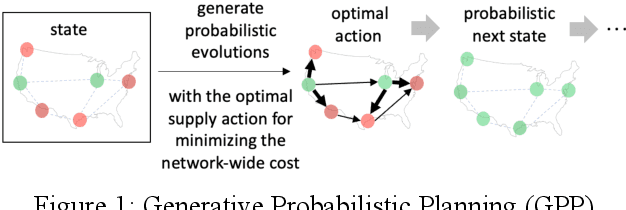
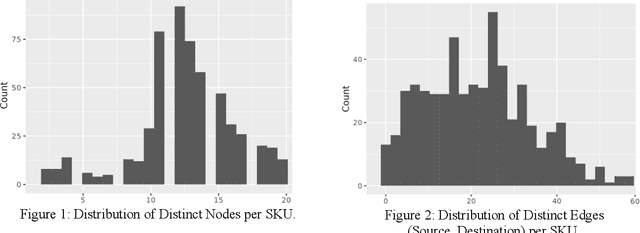
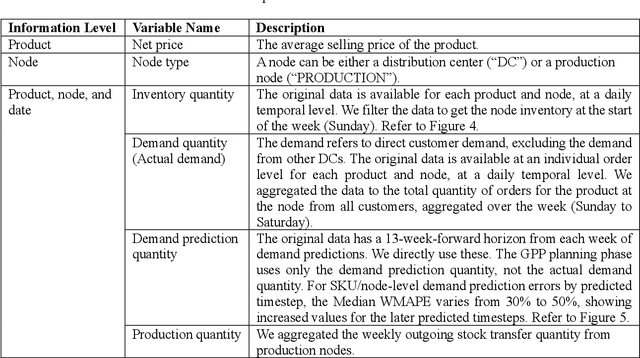
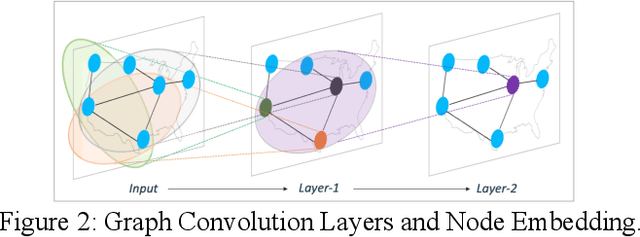
Abstract:Supply chain networks in enterprises are typically composed of complex topological graphs involving various types of nodes and edges, accommodating numerous products with considerable demand and supply variability. However, as supply chain networks expand in size and complexity, traditional supply chain planning methods (e.g., those found in heuristic rule-based and operations research-based systems) tend to become locally optimal or lack computational scalability, resulting in substantial imbalances between supply and demand across nodes in the network. This paper introduces a novel Generative AI technique, which we call Generative Probabilistic Planning (GPP). GPP generates dynamic supply action plans that are globally optimized across all network nodes over the time horizon for changing objectives like maximizing profits or service levels, factoring in time-varying probabilistic demand, lead time, and production conditions. GPP leverages attention-based graph neural networks (GNN), offline deep reinforcement learning (Offline RL), and policy simulations to train generative policy models and create optimal plans through probabilistic simulations, effectively accounting for various uncertainties. Our experiments using historical data from a global consumer goods company with complex supply chain networks demonstrate that GPP accomplishes objective-adaptable, probabilistically resilient, and dynamic planning for supply chain networks, leading to significant improvements in performance and profitability for enterprises. Our work plays a pivotal role in shaping the trajectory of AI adoption within the supply chain domain.
GNN-based Probabilistic Supply and Inventory Predictions in Supply Chain Networks
Apr 11, 2024Abstract:Successful supply chain optimization must mitigate imbalances between supply and demand over time. While accurate demand prediction is essential for supply planning, it alone does not suffice. The key to successful supply planning for optimal and viable execution lies in maximizing predictability for both demand and supply throughout an execution horizon. Therefore, enhancing the accuracy of supply predictions is imperative to create an attainable supply plan that matches demand without overstocking or understocking. However, in complex supply chain networks with numerous nodes and edges, accurate supply predictions are challenging due to dynamic node interactions, cascading supply delays, resource availability, production and logistic capabilities. Consequently, supply executions often deviate from their initial plans. To address this, we present the Graph-based Supply Prediction (GSP) probabilistic model. Our attention-based graph neural network (GNN) model predicts supplies, inventory, and imbalances using graph-structured historical data, demand forecasting, and original supply plan inputs. The experiments, conducted using historical data from a global consumer goods company's large-scale supply chain, demonstrate that GSP significantly improves supply and inventory prediction accuracy, potentially offering supply plan corrections to optimize executions.
MURA: Large Dataset for Abnormality Detection in Musculoskeletal Radiographs
May 22, 2018
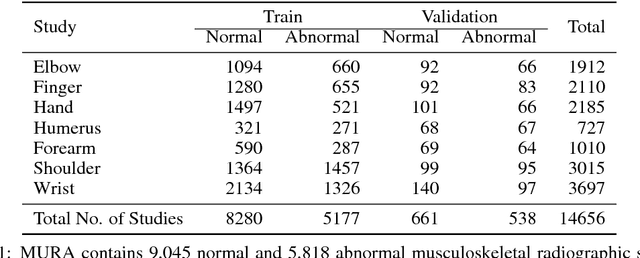


Abstract:We introduce MURA, a large dataset of musculoskeletal radiographs containing 40,561 images from 14,863 studies, where each study is manually labeled by radiologists as either normal or abnormal. To evaluate models robustly and to get an estimate of radiologist performance, we collect additional labels from six board-certified Stanford radiologists on the test set, consisting of 207 musculoskeletal studies. On this test set, the majority vote of a group of three radiologists serves as gold standard. We train a 169-layer DenseNet baseline model to detect and localize abnormalities. Our model achieves an AUROC of 0.929, with an operating point of 0.815 sensitivity and 0.887 specificity. We compare our model and radiologists on the Cohen's kappa statistic, which expresses the agreement of our model and of each radiologist with the gold standard. Model performance is comparable to the best radiologist performance in detecting abnormalities on finger and wrist studies. However, model performance is lower than best radiologist performance in detecting abnormalities on elbow, forearm, hand, humerus, and shoulder studies. We believe that the task is a good challenge for future research. To encourage advances, we have made our dataset freely available at https://stanfordmlgroup.github.io/competitions/mura .
CheXNet: Radiologist-Level Pneumonia Detection on Chest X-Rays with Deep Learning
Dec 25, 2017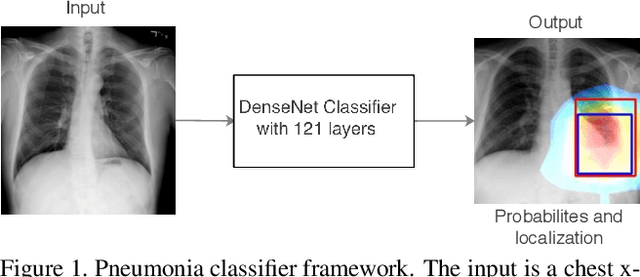

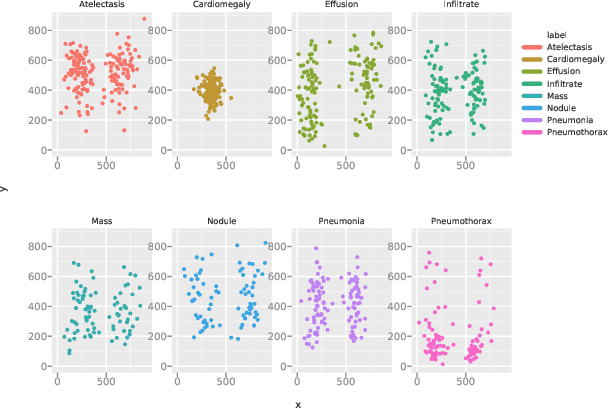
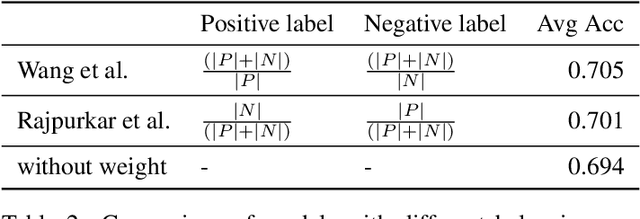
Abstract:We develop an algorithm that can detect pneumonia from chest X-rays at a level exceeding practicing radiologists. Our algorithm, CheXNet, is a 121-layer convolutional neural network trained on ChestX-ray14, currently the largest publicly available chest X-ray dataset, containing over 100,000 frontal-view X-ray images with 14 diseases. Four practicing academic radiologists annotate a test set, on which we compare the performance of CheXNet to that of radiologists. We find that CheXNet exceeds average radiologist performance on the F1 metric. We extend CheXNet to detect all 14 diseases in ChestX-ray14 and achieve state of the art results on all 14 diseases.
 Add to Chrome
Add to Chrome Add to Firefox
Add to Firefox Add to Edge
Add to Edge